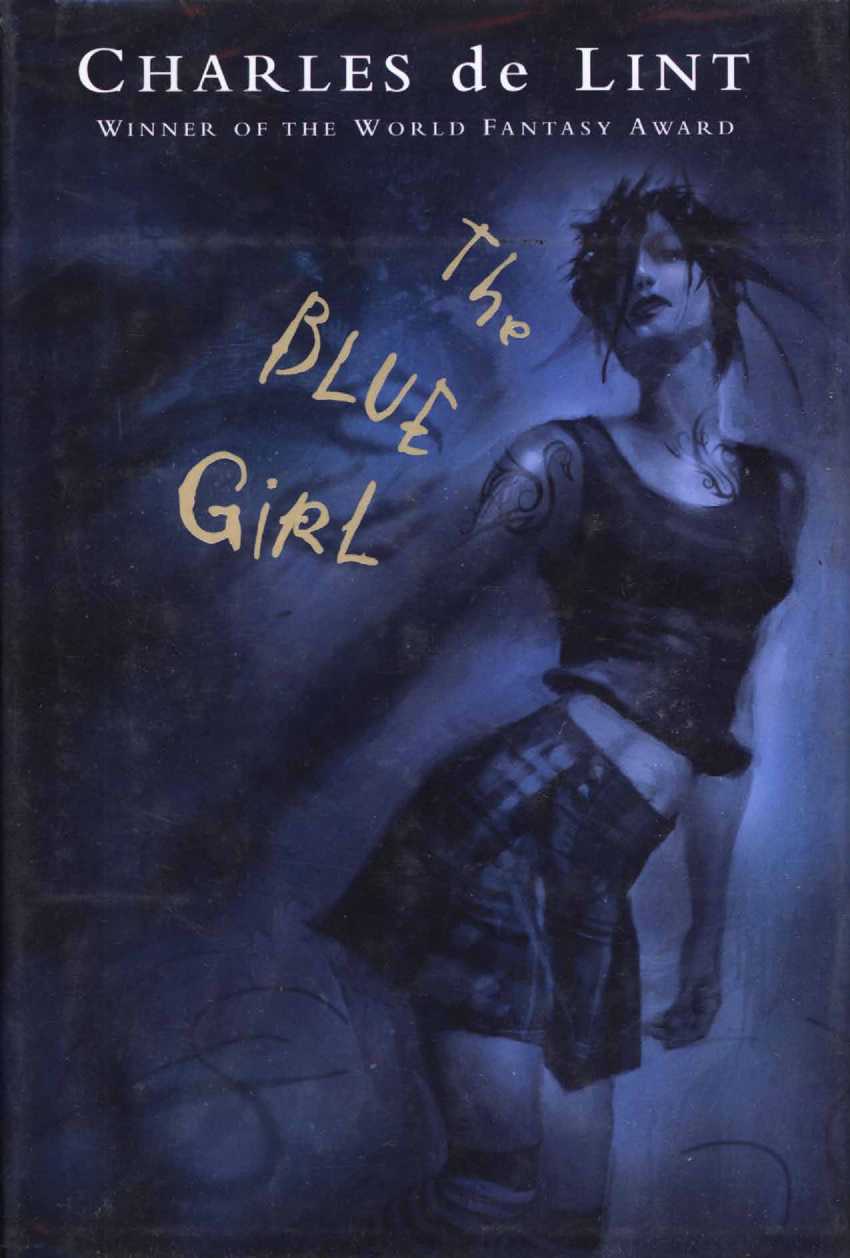
The Blue Girl PDF
Preview The Blue Girl
When Imogene, her mother, and her brother move to Newford, she decides to reinvent herself-this time she won't go looking for trouble. She quickly gets to know two very different people. Maxine is a "good girl," following a strict life plan. Imogene helps Maxine loosen up and break a few rules, and in turn Maxine keeps her on the straight and narrow. Imogene's other new friend is a little more unusual. His name is Adrian. He is a ghost. Adrian was killed when he jumped off the high school roof in 1998, and hasn't left since. He has a huge crush on her—so much so that he wants her to see the fairies that also haunt the school. The fairies invade Imogene's dreams, blurring the line between the unreal and the real. When her imaginary childhood friend Pelly actually manifests, Imogene knows something is terribly wrong. With Maxine, Adrian, and Pelly's help, Imogene challenges the dark forces of Faery. This compelling novel from Charles de Lint, the acknowledged founder of the "urban fantasy" genre, is set in the city of Newford, home to some of his best stories. After reading it, you will want to live in Newford, too.
Amazon.com ReviewImogene Yeck, former gang member and current fairy butt-kicker, is the cool "blue girl" at the center of Charles de Lint's latest urban fantasy novel. Seventeen-year-old Imogene jumps at the chance to lose her bad girl reputation when her family moves to a new town. She purposely lays low at Redding High, only making friends with Maxine, a shy, studious girl who is Imogene's opposite in every way. Despite a few run-ins with the ruling football jock and his cheerleader girlfriend, Imogene keeps her temper in check and even lends some of her bravado to Maxine, who begins to come out of her straight-A shell. Things are going well for the new friends--until the day Imogene meets Adrian, the benign ghost of a boy who died in the school's parking lot. Adrian and Imogene's unusual connection attracts the unwelcome attention of Redding High's resident Little People, or fairies. Affronted by streetwise Imogene's lack of belief in them, the fairies set into motion a malevolent prank that will not only turn Imogene completely blue from head to toe, but pit her, Adrian and Maxine against some of the most frightening beings of the Otherworld--the soul-sucking Anamithims. de Lint's Blue Girl reads like a really well-executed episode of Buffy the Vampire Slayer--smart and thought provoking, without taking itself too seriously. Although the action builds slowly, the final scene, involving a bucket of blue paint, a knife fight, and green monster blood, is absolutely worth it. Buffy fans who enjoy meeting Imogene and Co. will also want to check out Holly Black's dark fairy tale, Tithe, and Nina Kiriki Hoffman's modern ghost story, A Stir of Bones --Jennifer Hubert
From School Library JournalGrade 9 Up–This lively novel thoughtfully examines friendships that cross magical boundaries and explores how love can strengthen and save us. On her first day of school in a new town, Imogene meets Maxine, an outcast, and is targeted by a group of popular bullies. The two become friends despite their polar personalities; Imogene is bold and brash where Maxine is mousy and quiet. When Imogene notices a pale boy watching her, she asks about him and learns the story of Ghost–actually Adrian–another outcast who was harassed by cliques, died under mysterious circumstances a few years earlier, and now haunts the school. His only companions are a handful of amoral fairies. He convinces them to show themselves to Imogene, but this draws the soul-sucking anamithim to her, endangering her life and the people she loves. Adrian, Imogene, and Maxine alternate as narrators. Tied together as victims of both the magical world and of everyday tyrants, they are sympathetic characters who speak with sharp, snappy dialogue. As in Nina Kiriki Hoffman's A Stir of Bones (Viking, 2003), the otherworldly threat skillfully mirrors and enhances real-world concerns. This complicated story is made more intricate by the now/then time shifts between chapters. The two popular bullies are stereotypically flat, but the remaining characters are well drawn and delightful. Imogene's brutal choices about where to draw the line between self-protection and becoming like her tormentors are clearly depicted.–Sarah Couri, New York Public Library
Copyright © Reed Business Information, a division of Reed Elsevier Inc. All rights reserved.
